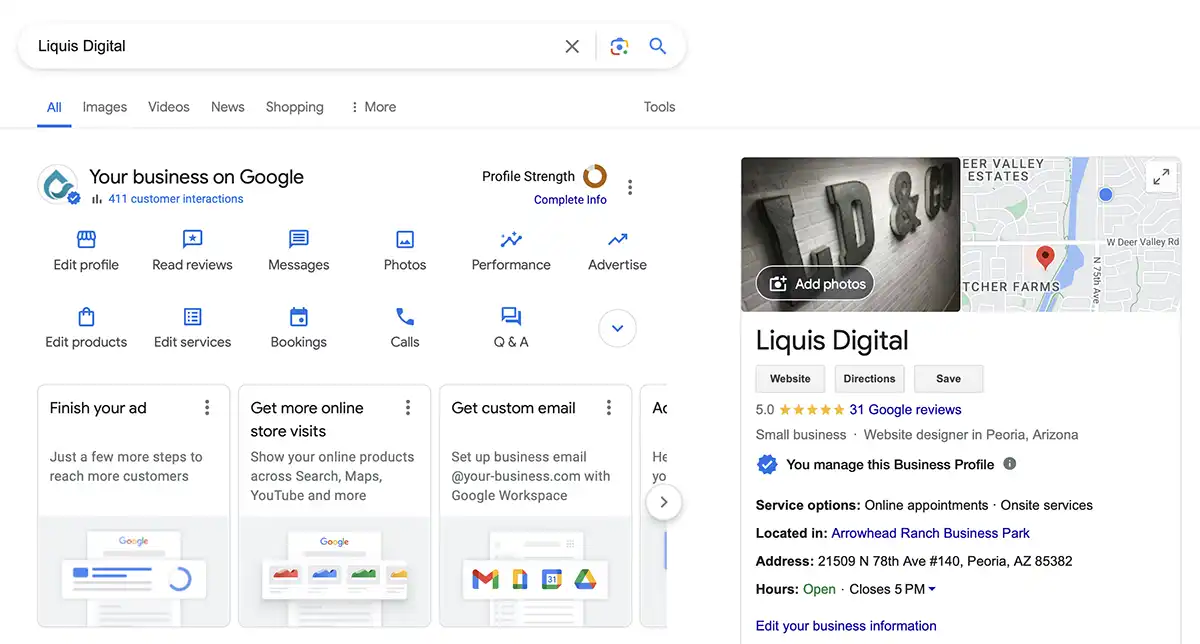
Climbing the ranks on Google’s search results isn’t just a matter of chance, it’s a strategic conquest requiring insight, precision, and a touch of creativity.
In your quest to secure the top spot and gain the enviable visibility that drives traffic to your site, understanding the intricacies of Search Engine Optimization (SEO) is paramount.
From unraveling the fundamentals of SEO to mastering local search dynamics and leveraging cutting-edge tools, the path to outmaneuvering your competition is both varied and demanding.
Keep reading to unlock the secrets of soaring past your rivals on the digital leaderboard.
Understanding SEO: Basics and Importance

Embarking on the journey to outrank your competition on Google starts with a solid grasp of SEO. Imagine SEO as the compass that guides Google through the vast digital landscape to find your content. It’s not just about throwing in a few keywords and hoping for the best; it’s about understanding how search engines think, what they value, and how they rank content.
Your first aim should be to make your website irresistible to search engines. Think of your website’s structure, speed, mobile-friendliness, and user experience as critical components that search engines scrutinize when ranking sites. Your content must not only captivate and engage but also meet the technical expectations of these digital entities.
Your digital presence must resonate with authority, relevance, and trustworthiness. Imagine every backlink to your site as a vote of confidence in the eyes of Google, aligning with the notion that the more reputable the source, the more valuable the endorsement. Crafting content that others want to reference positions you as a thought leader, giving you an edge over your competitors.
Consistency and quality in your content creation are your allies in the quest to top rankings. By routinely updating your site with fresh, original, and valuable material, you signal to Google that your site remains relevant and worth visiting. Stagnation is your enemy; growth and adaptability are your friends, propelling you towards that coveted top spot in search results.
Diving Into Local SEO: Strategies for Visibility

Transforming your online visibility within your community hinges upon executing a robust local SEO strategy.
You must fine-tune your digital presence to ensure when locals search, your business surfaces as the go-to solution in your niche.
This means enhancing your Google Business Profile, ensuring your business is accurately listed across the digital sphere, and optimizing your website specifically for local SEO — each step is a critical puzzle piece in the larger picture of local dominance.
By mastering these facets, you stand to not only increase your visibility but also position your brand as the local authority, capable of outmaneuvering competitors in your area.
Local SEO: Leveraging Google Business Profile
Securing a premier spot in local search results necessitates an optimized Google Business Profile. Your diligence here ensures that pertinent details—operating hours, location, and services—are meticulously aligned with the queries of your local audience, amplifying your visibility right at the moment potential customers are in pursuit of offerings like yours.
Engage with your community through your Google Business Profile by regularly posting updates, responding to reviews, and adding vivid images that reflect the character of your business. This active participation not only enhances your profile’s appeal but signals to Google the vibrancy and relevance of your business, aiding in ascending the ranks against local competitors.
Local SEO: Local Listings
Securing elevated visibility through local listings is pivotal for any business aiming to dominate local search. Strategize by placing your business information on prominent platforms such as Yelp, TripAdvisor, or industry-specific directories to boost local discoverability.
Accuracy is paramount: Ensure your business details are consistent across all listings. A typo in your address or mismatched contact info can erode your credibility and impede your quest to outshine competitors in local searches:
- Review and standardize your business’s name, address, and phone number on every platform.
- Identify and correct inaccuracies or outdated information to maintain consistency.
- Mobilize customer reviews on these listings to reinforce trust and authority.
Local SEO: Enhancing Your Website for Local SEO
To catapult your website to the zenith of local search results, instill a sense of place within your online content. Incorporate region-specific keywords and phrases that echo the vernacular of your community, enabling your site to reverberate more profoundly with local users and search engine algorithms alike.
Remember that on-page optimization extends beyond textual content; it includes local signals in meta tags and descriptions, too. Tailor these elements to sing of your locality, ensuring that each page on your site not only provides value but also exhibits a clear tether to your community, enhancing its relevance in the eyes of both your audience and Google’s discerning algorithms.
Technical SEO: A Comprehensive Guide

To secure a top position in Google’s rankings, you need to pay close attention to the gears and cogs that work behind the scenes of your website and your custom website design.
Technical SEO is that silent force, working tirelessly to ensure that your online presence isn’t just visible, but also attractive to search engine algorithms.
Addressing elements such as keywords, meta tags, page URLs, heading tags, page content, image optimization, and page loading speed will empower your digital footprint to stand steadfast against the tide of competition.
Let’s delve into these components, equipping you with the toolkit needed to refine your website into a well-oiled machine that outperforms your industry rivals.
Technical SEO: Keywords
To outpace your rivals in search engine rankings, intricately weaving keywords into the tapestry of your website’s content is essential. Select terms that mirror the queries your audience might use when seeking out your products or services on Google.
Aligning your content with well-researched keywords bolsters your relevance and enhances your discoverability. Be strategic: use a blend of broad and long-tail keywords tailored to your niche:
- Utilize broad terms to attract a wider audience.
- Incorporate specific, long-tail keywords for targeted user intent.
- Analyze and adjust your keyword strategy in response to search trends and competitive insights.
Technical SEO: Meta Tags
Optimizing meta tags is like sending a direct signal to Google, highlighting what your pages are about. These snippets of text aid in clarifying the essence of your content, prompting search engines to rank your site for the relevant queries your potential customers are entering.
Consider meta tags as the invisible yet influential liaisons between your content and search engines: crafting compelling and keyword-rich meta descriptions and title tags can be the differentiator that lifts your visibility above others:
- Create informative and engaging meta descriptions that entice users to click through to your site.
- Ensure your title tags are concise, yet descriptive, incorporating primary keywords near the beginning.
- Remember to use unique meta tags for each page to avoid content dilution and maintain distinct relevance.
Technical SEO: Page URLs
When striving to surpass your rivals on Google, pay close attention to your page URLs; these web addresses are more than mere links, they underscore your site’s information hierarchy and content priority. Construct URLs that are not only user-friendly but also keyword-enriched, facilitating recognition by search engines and simplifying navigation for your audience.
Ensure that your URLs are concise, devoid of unnecessary parameters or convoluted strings that could baffle search engines and users alike. A clean, well-structured URL fosters clarity and aligns with your keywords, bolstering your efforts to elevate your position in the competitive realm of search results.
Technical SEO: Heading Tags
Investing effort into effective heading tags is essential for structuring your content and improving readability. Clear headings enable Google’s algorithm to comprehend the layout and significance of your topics, thus reflecting positively in your SEO performance.
Consider heading tags as signposts that direct both users and search engines through your content with ease and clarity. Properly utilizing H1 through H6 tags to hierarchically organize information can make the difference in outranking your competition:
- Use H1 tags for your main title to encapsulate the primary focus of the page.
- Employ H2 and H3 tags for section headings that present distinct but related content areas.
- Apply H4 to H6 tags sparingly for subheadings that break down topics into more detailed segments.
Technical SEO: Page Content
When you aim to outperform your competitors on Google, you must recognize that compelling page content acts as your digital salesperson. Crafting superior quality text for your web pages with naturally embedded, contextually relevant keywords, not only pleases your readers but also catches Google’s discerning eye, steering your website towards the top of its rankings.
As you refine your website’s content, remember the importance of crafting each paragraph as if it were a valuable asset in your SEO toolkit. By enriching your narrative with insightful, engaging content tailored to address and anticipate the informational needs of your audience, you lay the groundwork for an online domain with the magnetic appeal required to outshine competitors and secure a prime position on Google.
Technical SEO: Images
Visuals on your site do more than just break up text; they have the power to enhance your SEO resilience. Optimize images for faster loading times and ensure each graphic has a descriptive, keyword-rich file name and alt text to promote accessibility and relevance in image searches.
Remember, search engines can’t “see” images in the traditional sense, they understand them through the associated metadata: employ this to your advantage to help you leap over your competitors in search rankings. Here’s how you should approach it:
- Compress your images to boost page loading speed without sacrificing quality.
- Choose the right file format, like JPEG for photographs or PNG for graphics with transparent backgrounds.
- Describe the content of the image in the alt text, using keywords that align with your SEO strategy.
Technical SEO: Page Loading Speed
When the pages of your site take too long to load, you run the risk of not only frustrating users but also slipping in Google’s rankings. Site speed is a critical factor in user experience, and Google rewards sites that load quickly, recognizing their efficiency and user-friendliness with higher search rankings.
Master the art of fine-tuning your site’s performance to ensure lightning-fast load times: optimize your code, compress your content, and leverage browser caching. These actions are vital components of your technical SEO strategy and will support your climb up the Google rankings:
- Minimize CSS and JavaScript files to reduce the number of server requests.
- Implement image compression to decrease page weight without degrading visual quality.
- Use browser caching to store elements of your site locally on users’ devices, cutting down future load times.
Executing these technical refinements represents a commitment to seamless user experiences and is integral to fortifying your stance against competitors. Don’t let a sluggish website be the anchor that diminishes your online potential; prioritize speed and watch your Google rankings thrive.
Utilizing Google Search Console for SEO Insights

Turning the spotlight on Google Search Console equips you with profound insights to navigate the SEO battleground.
Harness this suite of tools to disseminate your sitemap effectively, pinpoint pivotal pages demanding your focus, and expedite the ranking process of your content.
Tapping into the arsenal of data that Google Search Console offers can transform your strategy into a precise, competitive edge to outmaneuver your rivals on the search engine results page.
Google Search Console: Sitemap
Deploying your sitemap through Google Search Console propels your SEO endeavors with precision. It’s the digital blueprint you submit to Google, ensuring all your website’s pages are indexed correctly and efficiently.
By fine-tuning your sitemap, you underscore the structure of your site to Google, prioritizing how your content should be crawled and indexed for maximum impact:
- Periodically review your sitemap for errors and rectify them to maintain a seamless indexing process.
- Update your sitemap to reflect new or removed pages, sending the latest layout of your digital domain to Google.
- Track the sitemap’s performance in the Search Console to understand how effectively Google is indexing your site.
Google Search Console: Finding Page to Focus On
Discovering which pages to sharpen your focus on is integral to escalating your rank on Google. Google Search Console shines a light on your website’s performance by pinpointing which pages will benefit most from additional optimization:
- Identify underperforming pages that are ripe for content enhancement or technical tweaks.
- Assess which high-performing pages can serve as models for successful SEO practices across your site.
- Unearth opportunities by analyzing search queries that lead users to your site but may not be fully capitalized upon.
Leverage Google Search Console’s data to strategically bolster those pages with room for growth, using insights into user behavior and search patterns. By concentrating your efforts where it counts, you increase the likelihood of improving your visibility and climbing above your competitors in online searches.
Google Search Console: Getting Pages To Rank Faster
Accelerating the speed at which your pages climb Google’s rankings can be accomplished with strategic use of Google Search Console. This tool offers you the option to request indexing for new or updated pages: a clear signal to Google that your content is fresh, relevant, and in need of swift evaluation.
With your keen focus, you can employ Google Search Console to pinpoint bottlenecks restricting your content’s ascension in search results. Address these with targeted improvements and then harness the ‘URL Inspection’ tool to nudge Google’s bots for a re-crawl:
- Submit individual URLs for re-indexing after implementing significant page updates.
- Verify changes are acknowledged and errors resolved by analyzing the coverage status of submitted URLs.
- Monitor crawl stats to understand how Google interacts with your site, adjusting your strategy as needed.
SEO Tools I Recommend

Embarking on your quest to dominate search engine rankings necessitates a robust toolkit, tailored to dissect and amplify your SEO strategy. Employ intelligent SEO software platforms that blend precision analytics with competitor insights, affording you the clarity to refine your online presence. These platforms, steeped in data analysis, become your steadfast allies, guiding your decisions and carving a path toward the pinnacle of search results.
Rivalflow: It’s great at finding content you need to add to your pages to outrank your competition.
SEO Management tools:
Google tools:



